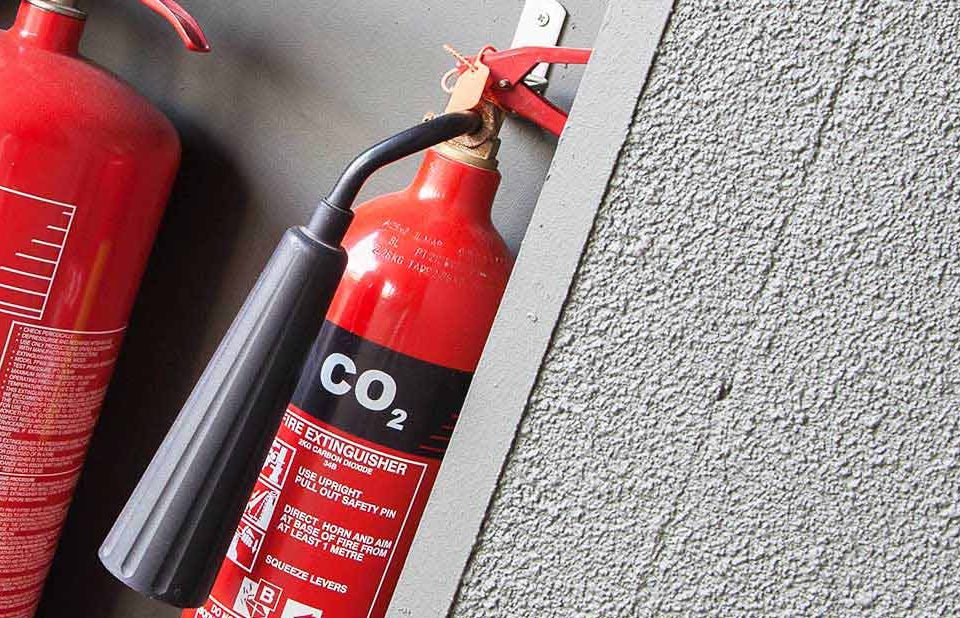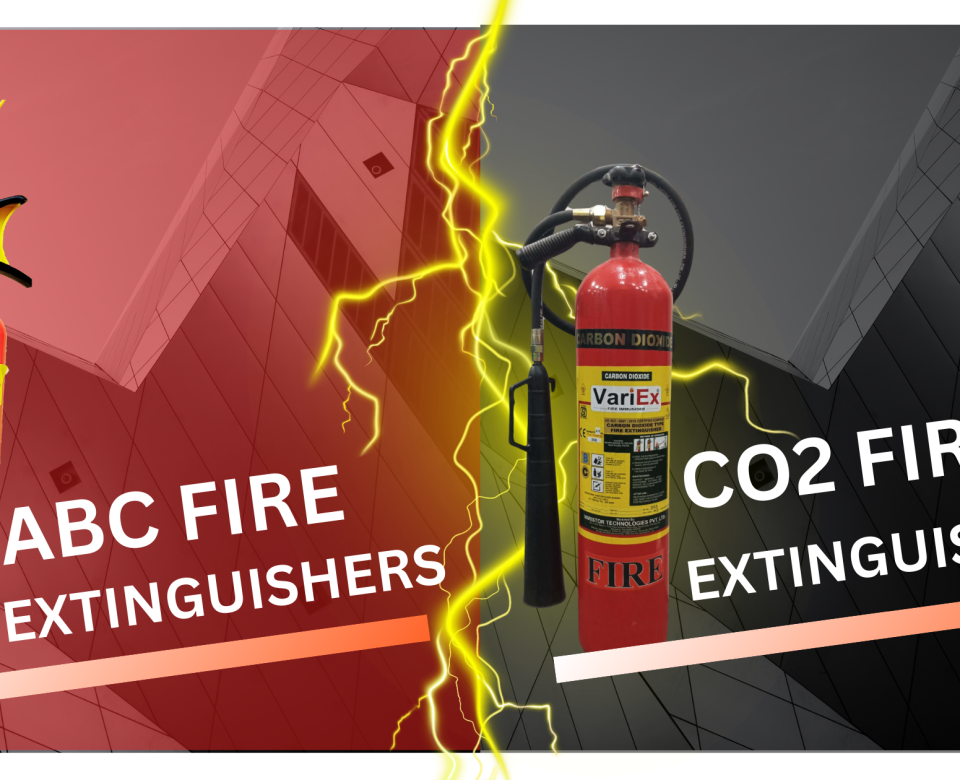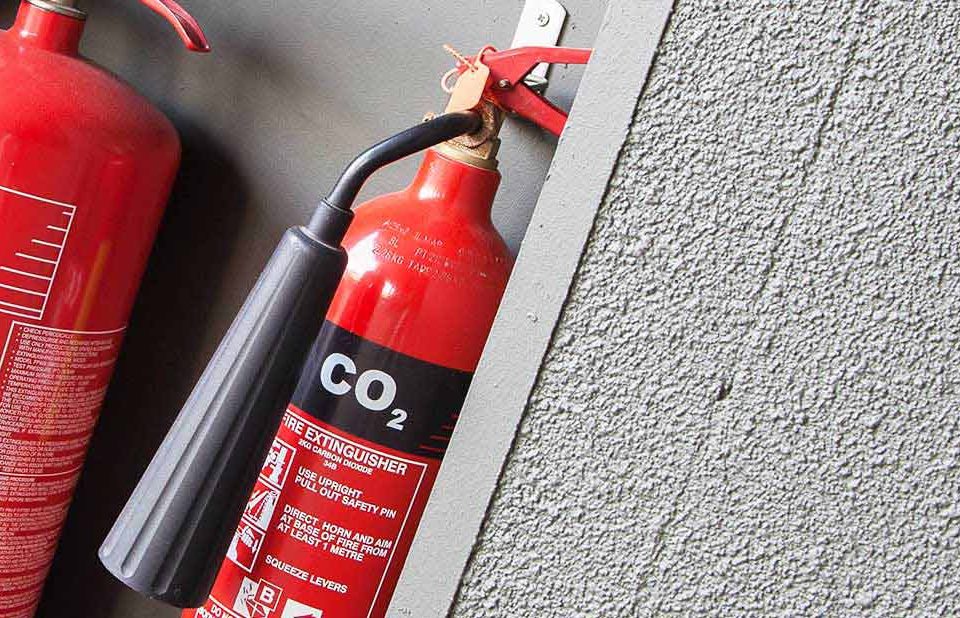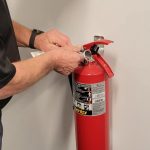
Signs a Fire Extinguisher Needs Recharging or Replacement
August 6, 2025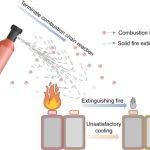
How Fire Extinguishers Work – Cooling, Smothering, and Chemical Interruption?
August 14, 2025Fire safety is one of the most important aspects of protecting your home, workplace, and vehicle. Fires can start suddenly from a small spark or accident and can quickly escalate if not controlled properly. Having a fire extinguisher nearby is crucial, but more important than owning one is knowing how and when to use it. Proper fire extinguisher training empowers individuals to respond calmly and effectively, minimizing damage and saving lives. In this blog, we will discuss who should be trained to use fire extinguishers and the right situations to use them, while also covering types of extinguishers and other fire safety tools.
Understanding Fire Extinguishers
What is a Fire Extinguisher?
A fire extinguisher cylinder is a portable device filled with a special agent designed to put out different types of fires. These agents vary, some extinguish fires by cutting off oxygen, others cool the burning material or interrupt the chemical reactions fueling the fire.
Common types of extinguishers include:
- Water Extinguishers: Best for ordinary combustible materials like wood or paper.
- Foam Extinguishers: Effective on flammable liquids like petrol.
- CO₂ Fire Extinguishers: Use carbon dioxide gas to suffocate electrical and liquid fires without leaving residue.
- Dry Powder Extinguishers: Versatile for many fire types, especially flammable liquids and electrical fires.
- Wet Chemical Fire Extinguishers: Specialized for cooking oil and fat fires, such as those often found in kitchens.
Each extinguisher type uses a different fire extinguisher gas or agent to combat specific fire classes safely and efficiently.
Classes of Fires
Understanding the classes of fires helps you select the right extinguisher:
- Class A: Fires involving ordinary combustible materials like paper, wood, or cloth. Use water or foam extinguishers.
- Class B: Fires fueled by flammable liquids such as petrol or oils; CO₂ and dry powder extinguishers are most effective.
- Class C: Electrical fires, where using water is dangerous. Here, CO₂ and dry powder are safe choices.
- Class D: Rare fires involving combustible metals, requiring specialized dry powder extinguishers.
- Class K: Kitchen fires involving cooking oils and fats. Wet chemical fire extinguishers are designed specifically for these fires.
Why Fire Extinguisher Training Matters
Having access to fire-fighting equipment like a fire extinguisher ball or a traditional cylinder is just the first step in fire safety. Without knowledge and practice, these tools can be ineffective or even hazardous.
Fire extinguisher training helps to:
- Reduce panic: In an emergency, people often freeze. Training builds confidence.
- Prevent misuse: Using the wrong extinguisher or incorrect technique can worsen the fire.
- Ensure compliance: Workplaces follow regulations from bodies like OSHA or NFPA requiring trained personnel.
- Increase response speed: Quick use of a fire extinguisher often controls small fires before fire services arrive.
Learning which gas is used in fire extinguisher types and how they affect specific fires is crucial knowledge for safe handling.
Who Should Use a Fire Extinguisher?
Trained Personnel in Workplaces
In offices, factories, and public spaces, designated safety officers and staff undergo fire extinguisher training. They learn to identify hazards and select appropriate extinguishers, whether it is a CO2 fire extinguisher for electrical fires or a wet chemical fire extinguisher in kitchens.
Employees in High-Risk Areas
Those working in environments prone to fire risks, such as kitchens, laboratories, or electrical rooms, benefit greatly from training. For instance, kitchen staff should be familiar with wet chemical extinguishers and how to use equipment like fire blankets for smothering flames without water.
Homeowners and Residents
You don’t need to be a professional to use a fire extinguisher effectively. Homeowners should have access to reliable fire safety tools like fire extinguisher cylinders, fire buckets, and fire blankets. Having a car fire extinguisher is also wise, especially for long drives or in areas where help might be delayed. Basic hands-on training ensures your safety and that of your family.
Who Should NOT Use Fire Extinguishers?
- People without proper training or confidence should avoid trying to fight sizable or rapidly spreading fires.
- Anyone with mobility or health limitations that hinder quick evacuation should prioritize escape and call professional help.
- Large fires or those producing thick smoke require immediate evacuation and calling emergency services rather than attempting extinguishing.
When to Use a Fire Extinguisher
The PASS Rule
Using a fire extinguisher effectively involves a simple but important technique known as the PASS system:
- Pull the pin to unlock the operating lever.
- Aim the nozzle or hose at the base of the fire.
- Squeeze the handle to release the extinguishing agent.
- Sweep the nozzle side to side, covering the fire’s base until it is out.
The Right Situations to Use a Fire Extinguisher
- Fires should be small and contained, for example, a wastebasket on fire or a minor kitchen grease fire.
- You must have a clear exit path in case you need to retreat.
- Only use extinguishers you are trained on and confident to operate.
When NOT to Use a Fire Extinguisher?
- Avoid using an extinguisher on a fire that is large, spreading quickly, or producing thick smoke.
- Do not attempt to fight fires if you feel unsafe or are unsure about the process.
- In large fires, immediate evacuation and calling the fire department is the best course of action.
Common Mistakes to Avoid
- Using the wrong type of extinguisher, such as water on electrical or oil fires.
- Standing too close, too near can lead to injury; too far reduces effectiveness.
- Not contacting fire services soon enough, mistakenly relying only on extinguishing yourself.
- Forgetting to check the fire extinguisher price, purchasing very cheap and low-quality products that may fail in emergencies.
Fire Extinguisher Training Programs
Workplace Safety Training
Many organizations arrange professional training sessions covering:
- Hands-on use of fire extinguisher cylinders and fire extinguisher balls.
- Understanding extinguisher types and their gas used in fire extinguisher.
- Regular refresher courses to maintain skills and confidence.
- Guidance on the latest fire safety equipment and fire extinguisher price considerations for budgeting.
Community & Home Safety Programs
Local fire departments and safety organizations often hold workshops for residents. These focus on accessible equipment like fire blankets and fire buckets, along with extinguishers, enabling everyday people to respond safely to household fires.
Maintenance & Readiness
Fire safety tools must be ready to use at any time:
- Check expiry dates and pressure gauges on fire extinguisher cylinders regularly.
- Inspect fire extinguisher balls for wear or damage.
- Ensure all equipment, including car fire extinguishers, is easily accessible and clearly visible.
- Store extinguishers in places prone to fire risks but avoid locations where extreme temperatures could damage them.
Conclusion
Knowing who should use fire extinguishers and when to use them is a key part of responsible fire safety. Whether at work, home, or on the road, having the right tools like a CO2 fire extinguisher, wet chemical fire extinguisher, or innovative fire extinguisher balls, combined with proper training, can prevent disasters.
Investing in quality equipment while balancing fire extinguisher price and availability is a wise decision. Remember, proper training and maintaining your fire safety gear not only comply with safety laws but importantly save lives.
If you want to ensure you, your employees, or family members can respond effectively in case of fire emergencies, contact Haseen Habib today. Get expert fire extinguisher training and advice on sourcing the best fire safety equipment based on your needs.
Stay prepared, stay safe, and protect your loved ones with the right knowledge and gear!


